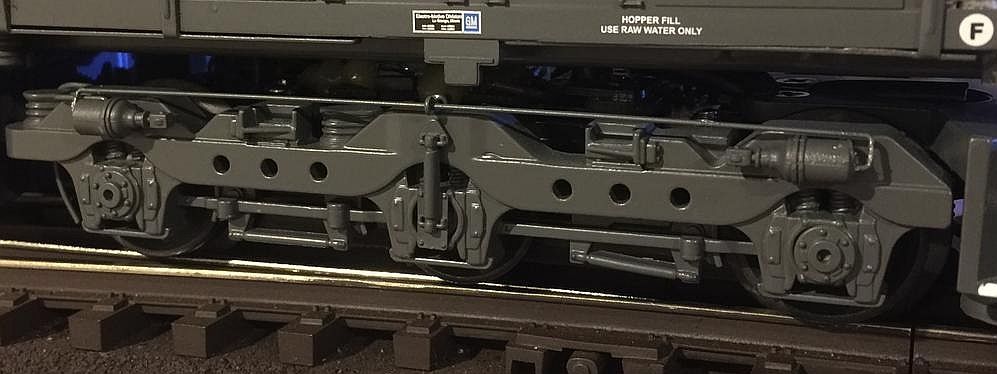Preordered this 2015 Volume 1 model from Nassua Hobby back in March, shipped this past week arriving yesterday. A little back story when it comes to my experience with PS3 engines. I have had three total PS3 engines, yet not one has now found a permanent home in the engine house. My past experiences have not been overly positive. I took possession of a B&O GP35 several years back. That initially ran with some issues, specifically it would "lose" the DCS signal on the track. It came down to the wiring location within the body of the loco and after slight re-routing of a wire harness, it ran very well. I then took possession six months ago of a Rio Grande SD50. This model simply didn't run out of the box. It would startup, but it simply would not move down the track. Finally, my third PS3 engine is the one being highlighted in this review. Does it have what it takes to find a permanent home out west on my Rio Grande switching layout? Let's take a look.
Packaging (9/10)
The model shipped in the familiar purple Premier box, with the model sticker on the outside flap. I removed the styrofoam enclosure and subsequently the top cover. The model was well wrapped, which I marvel due to the fact that I can never get it took look so good when placing a model back into the box. Also in the box was a grey snowplow, a tube of proto smoke and replacement traction tires. Overall, nothing remarkable or special with the packing, but performed nicely in terms of protecting the loco during shipping.
Adding to DCS
Since I run a DCS system the first test is to see if the DCS system can read the engine and pull in the appropriate engine details. I simply added the engine using the system menu on the remote. DCS found the engine without issue, assigning an appropriate address. I then proceeded to start the engine, which it did without fail.
Sounds (10/10)
My one criticism of PS3 has always been the sounds weren't remarkably better than that of PS2, especially true with the early PS3 releases. In fact Lionel Legacy in my opinion had better sounds than PS3 and PS2, really wasn't a contest. However, in my brief time with the SD50 several months back and now this model, MTH has really made a dramatic turn for the better when it comes to sound quality. Bottom line the sounds are FANTASTIC! As you can see in the video below, the sounds have much body, are robust and have depth in terms of simulating what you actually might hear trackside. You won't be dissapointed.
Detail (9/10)
The model continues MTH's tradition of producing very detailed models. The grills on the side of the body are "see thru". Separately applied details include, bell, grab irons, and snow plow. Decals litter the model and include legible build plate and warning decals. Finally, eyelets litter the top of the model. In the photos below one can see the fine detail in the trucks as well. Bottom line MTH continues to produce high detail in the premier line, which is expected at this price point.
Performance (8/10)
During my hour or so of testing, I'm quite pleased at the locos performance. I ran into some minor issue at slow speed of the loco stopping or lunging back and forth as though a gear was caught in something. As with many Premier line locos you can achieve smooth slow running at around 4 SMPH. Lionel Legacy models continue to be in my opinion the top slow runners. I can without issue have smooth running in TMCC mode under DCS at 1 SMPH without issue. Not to say this loco doesn't perform well, but if you are looking for exceptional smooth running at low SMPH, you might be disappointed. Overall, however, as the loco went through the different speed steps the sounds kept up making for a very realistic and enjoyable experience during the run sessions. The gearing was very quite and was quite pleased overall with the performance.
Final (9/10)
Finally! I have a PS3 locomotive that met my expectations right out of the box, cementing its place in the engine house. The sounds are excellent and the performance is equally satisfying. If you are in the market for a classic Tunnel motor model, MTH has delivered in this 2015 Volume 1 release.






















